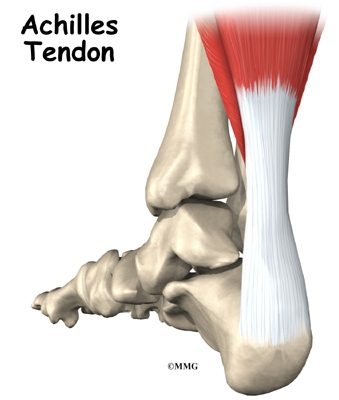 Diabetic patients frustrated by hard-to-heal, infection-prone ulcers on their feet could benefit from a common, minimally invasive surgical procedure to relieve tightness in their Achilles tendons.
Diabetic patients frustrated by hard-to-heal, infection-prone ulcers on their feet could benefit from a common, minimally invasive surgical procedure to relieve tightness in their Achilles tendons.The Achilles is the largest tendon in the human body, connecting the calf muscles to the heel bone. As we age, the tendon naturally tightens. However, diabetes exacerbates the process as increased blood sugar levels deposit glucose in the collagen of the tendon, greatly reducing its elasticity and making stretching almost impossible.
A tight Achilles inhibits ankle movement, forcing diabetic patients to place excessive pressure on the front of the foot. Pressure normally absorbed by the ankle has to go somewhere else and the forefoot gets most of it, heightening the risk for ulcer development underneath the toe joints.
Foot sores or ulcers are a common complication of diabetes. They result from sensation loss or neuropathy, which deprives diabetes patients of their ability to feel pressure or pain in the lower extremities. Therefore, even the slightest cut, blister or wound can develop into a diabetic foot ulcer. Such wounds can cause tissue and bone infections and can result in loss of a toe, a foot, a leg or even a life.
Published research has shown that surgery to lengthen the Achilles tendon in a diabetes patient can help prevent ulcer recurrence.
Lengthening occurs by making three small, pinpoint cuts to loosen and stretch the tendon. This helps restore ankle flexibility and relieves forefoot pressure. The procedure allows diabetes patients who keep their blood sugar under control to walk more normally and may lower their risk for redeveloping foot ulcers.
For further information about diabetic foot conditions, please contact our office for a consultation, 440-946-5858.
No comments:
Post a Comment